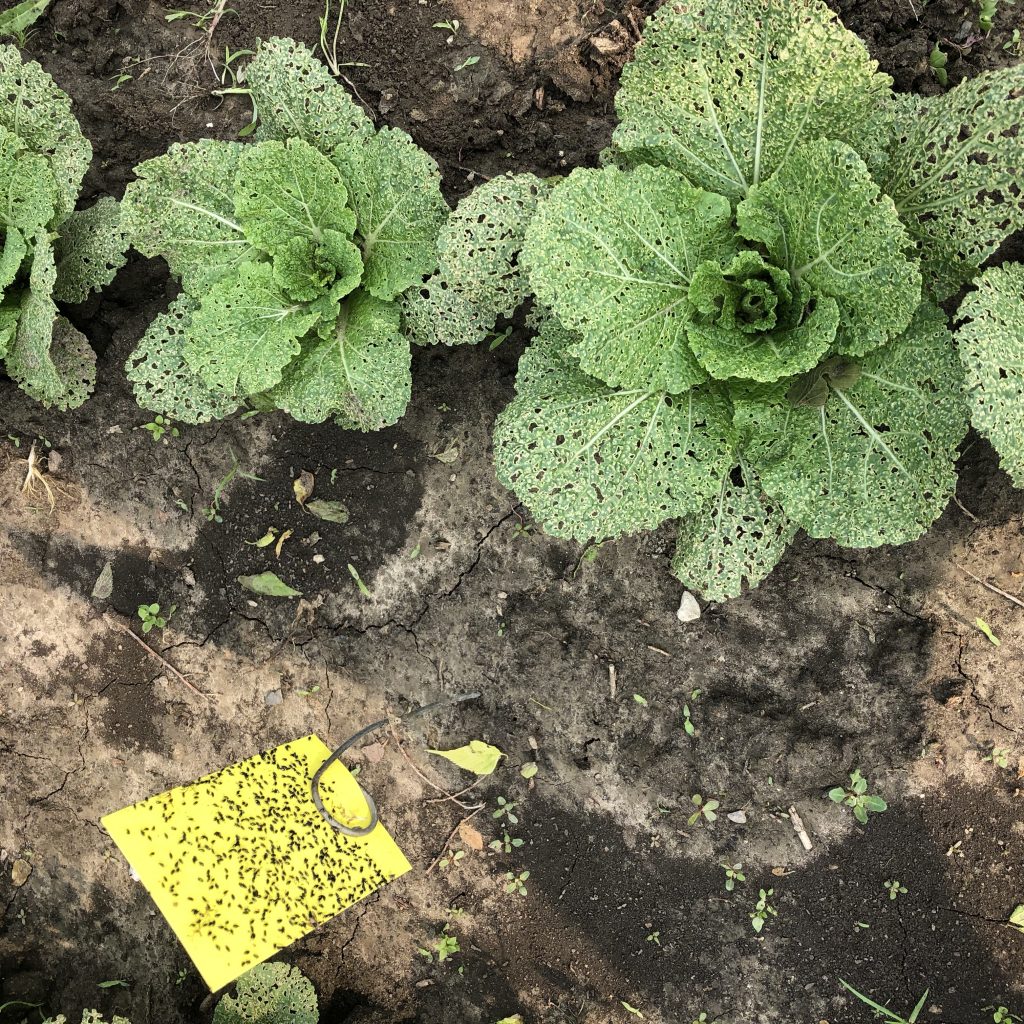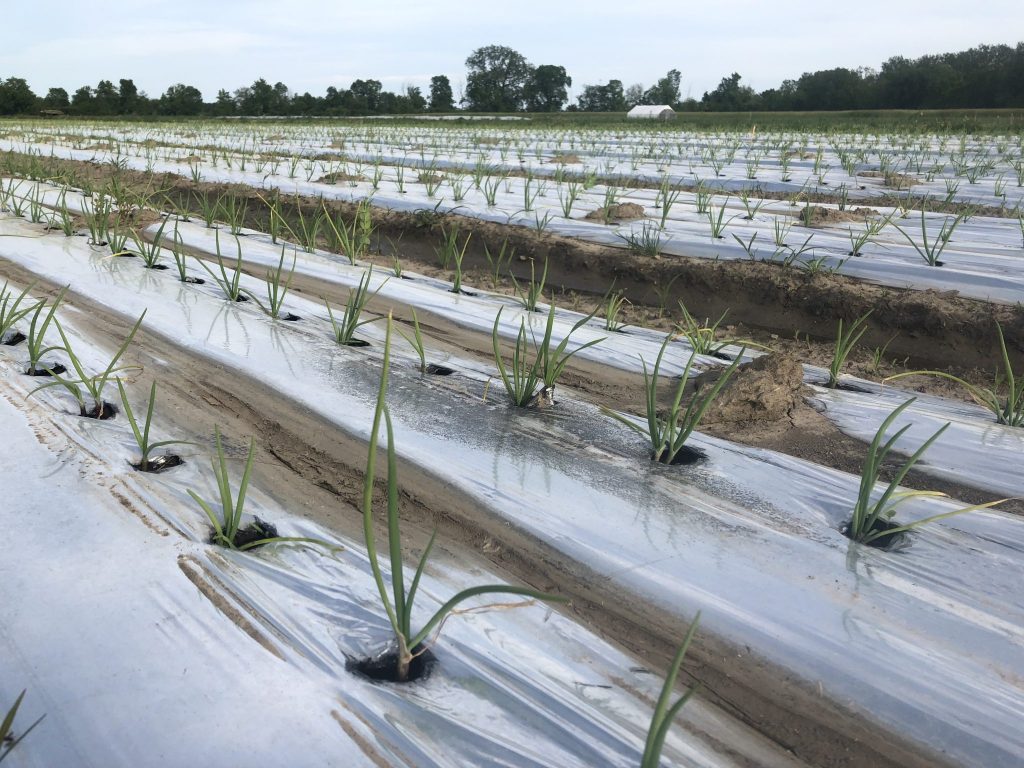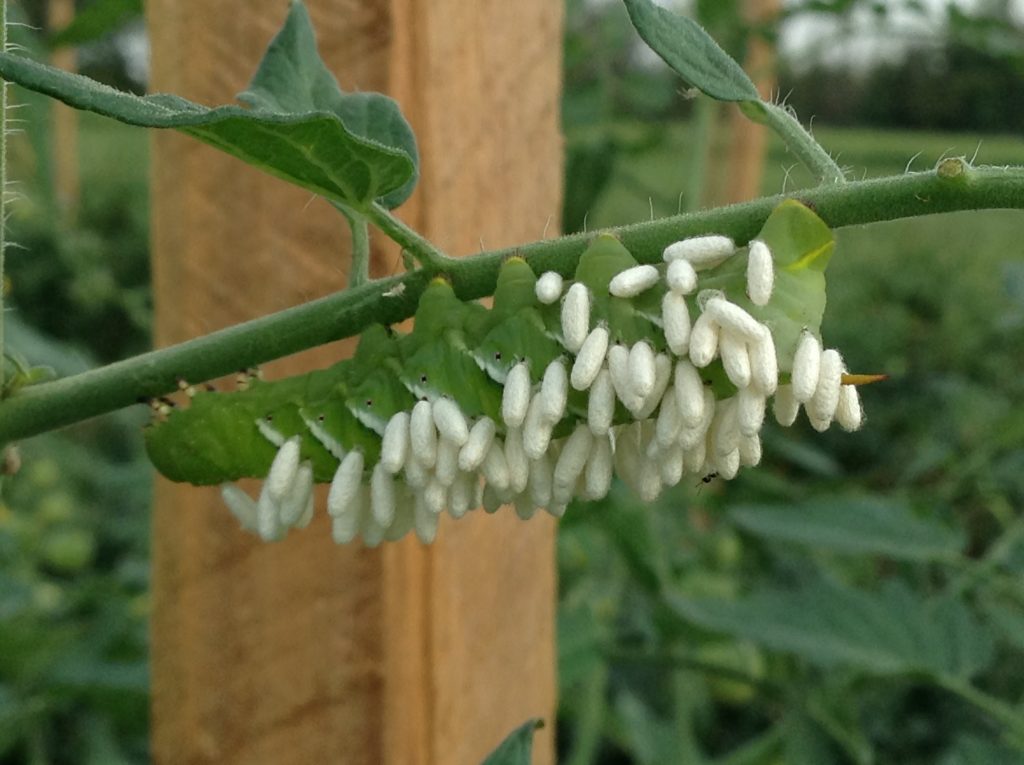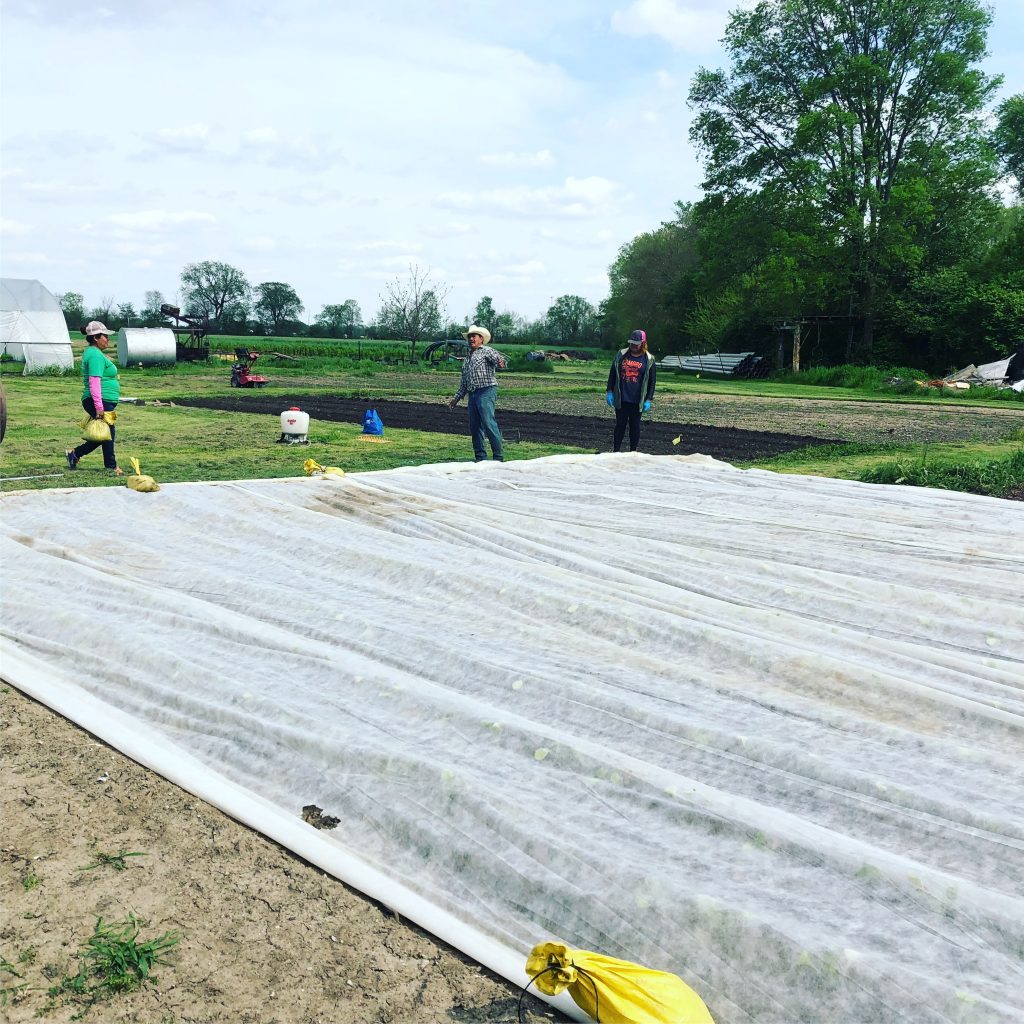Do Organic Farmers Spray (and Other Questions About Pest Management)
Do Organic Farmers Spray?
Organic Pest Management Revealed!
If you signed up for our CSA because we were “certified organic,” you may be wondering, how do you keep those bugs off? What exactly are you doing different?
This blogpost is designed to answer those questions. (Cuz I know you’re asking them).
The reality is that pest management is a necessity for every farmer. Why?…
Because no one likes finding flea beetles in their Napa cabbage or worms on their broccoli — (even gracious, accommodating CSA members).
Americans expect perfect produce.
Grocery store chains also have strict quality standards as a result. If our produce is scarred, misshapen, or marked with a few holes — it’s rejected. (I don’t blame them. They’re just delivering what their customer wants.)

Would you want to eat this? Exactly. This is what happens when flea beetles get out of control. Pest management is a MUST for all farmers. Find out how we combat pests as organic farmers.
This week, I want to peel back the layers and educate you about how organic pest management works for us as organic growers.
I’m also going to bust a common myth — namely that certified organic farmers don’t spray.
Because we do.
Is your mind blowing up right now? And before you freak out, keep reading because there is WAY more to this story. I’ll spell it all out by the end of this article.
But first things first: Shared Legacy Farms has been certified organic since 2016.
That’s a big deal. And it’s not “easy” to do.
If you see the “USDA Organic” or “Certified Organic” seal on your food, it means that: they are free of synthetic additives like pesticides, chemical fertilizers, and dyes, and must not be processed using industrial solvents, irradiation, or genetic engineering, according to the USDA.

The certified organic seal
To keep our certified status, we have to abide by these rules.
That means there are certain growing practices that are flat out NOT ALLOWED. Many of them revolve around:
- what you can and cannot do to amend your soil,
- what you can and cannot spray on your plants, (there’s that scary word again) — and
- what kinds of seeds you can and cannot use (i.e. no GMOs ever).
We must also document everything we do — from seed varieties and yields per bed row, to compost applications, to wash water concentrations, to soil testing results, to every chemical we spray on our plants. And once a year, a 3rd party inspector comes to the farm and spends several hours grilling Farmer Kurt — all in an attempt to verify that our documentation and practices match the certified organic “standard.”
So let’s talk about those bugs.
Bugs like to feast on our plants.
It’s what they do.
And we can’t take it personally. They’re just trying to survive.
They’ll either eat the leaves and roots, which stunts the plant’s growth and causes it to go into defense mode, or they’ll eat the vegetable itself!
Every farm has a list of top 5 bug offenders. Our pests include thrips (for onions), flea beetles, cucumber beetles, cabbage looper worm, and the Colorado potato beetle.
As certified organic growers, we have several tools in our arsenal for combatting bugs. Here’s a brief summary of the more common ones we use…
8 Organic Preventive Measures for Bugs:
Promoting healthy soil — Farmer Kurt likes to say, “Healthy soil produces healthy plants.” We focus a lot of our energy on the front end trying to build up our soil health BEFORE we ever plant. Cover crops, cow manure, chicken manure, fish fertilizer, molasses, nematodes, mineralization. The theory is that if your soil is balanced, it will create stronger plants with the energy to fight pests off when they come (or at least minimize their damage).
Knowing Bug Life Cycles — So all bugs follow a life cycle. For example, the adult potato beetle lives about 30 days and spends its 4 weeks laying batches of orange eggs on the underside of the leaves. These hatch after 4-10 days into larva. The larva feed for 21 days. They then fall into the soil and form a pupa. They emerge 5-10 days later as an adult, and start the whole process over again. If you know the different phases of the pest’s development, you can create counter-measures to attack them when they are most vulnerable. Or at the very least, you might know when you have a period of relief in bug pressure.

This reflective poly is also a bug deterrant. It disorients the pest known as “thrips” and keeps their population down.
Plastic Mulch — Have you seen any of our pictures of the plastic row covering on our beds? We sometimes use a reflective kind — it looks like aluminum foil. This shiny surface disorients certain bugs and significantly decreases the number that fly down to take a snack. The downside: it’s made of plastic so we have to throw it away after one use. It’s also more expensive than other plastic mulches.
Row cover — If you walk around our fields, you’ll always find a few beds that are currently covered with a big white permeable “blanket.” This is called “Agribon” or row cover. It basically acts as a kind of shield. The bugs can’t get in as long as we keep it covered. However, sometimes they come in through the soil, and then the cover is like a trap that keeps them inside! A double-edged sword. But this usually works well for us with cole crops and leafy greens.
Picking them off by hand — Oh yes. This is fun. When the potato beetles come, we sometimes pluck them off one by one by hand and throw them in a bucket of kerosene — just to keep them from laying more eggs. And I remember a year when our boys collected tomato horn worms (big green suckers) off the tomato plants, threw them in a 5 gallon bucket, and then fed them to the frenzied chickens.
Bug traps — We’ve got several of these that we practice. For example, we fill old milk jugs with water and then paint the surface of the jug with a sticky substance. These jugs are placed every 5 feet in the bed. The water in the jugs heats up during the day. Then at night, the flea beetles flock to its warmth and get stuck. You can also plant an entire bed row of “decoy” crops to lure a certain bug away.

This is a tomato horn worm. It will devour our tomato plants. The white cylinders are actually the pupa of the Brachonid wasp larva, feeding on the insides of the worm.
Beneficial Insects — Sometimes we use the “circle of life” and rules of predator/prey to our advantage. For example, we know that the Brachonid wasp is a natural predator to the tomato horn worm. The female wasp lays its eggs in the body of the worm, and once they hatch, the larvae feed on the insides of the worm until it dies. We buy these wasp eggs and introduce them to our tomato fields at just the right time. It helps a TON.
Spraying the bugs — Wait, did you say “SPRAY?!!”…Yes.
So here’s the part of the blogpost where we bust the myth that organic farmers aren’t allowed to spray.
I assure you, organic farmers ARE legally allowed to spray chemicals on pests. But just certain kinds...
Specifically the kinds that are listed on the approved products list by OMRI (Organic Materials Review Institute). You can see this list here is you want… (We use Entrust, Pyganic, Azaguard most frequently). These OMRI approved products contain a type of naturally occurring biology that causes undesirable effects for the bug. For example, one variety might cause a bug’s exoskeleton to soften. Another disorients the metabolism of the pest so that they die.

This is Agribon — row cover. We use it as as “shield” against the flea beetle.
Kurt scouts for pests on a regular schedule each week. He has learned to pay attention to certain threshold indicators that a pest may be getting out of control. We’ll place bright yellow sticky cards in the beds. The color attracts bugs; they get stuck to the card. And we count the population on the cards periodically to see how bad the pest pressure is. For example, when he notices more than say 5 plants in a given area contain thrips, he will know that he needs to spray to keep them from getting even more out of control.
We also spray fish emulsion and micro-biology/nutrients onto the soil before we ever even plant things. These kind of sprays are for building soil health — nothing to do with bugs.
As I said before, we must document every time we spray something — what we sprayed, how much concentration, which section of what row bed, what day and time, and keep a detailed log.
Can I tell you something?…
I have never posted a picture on Facebook of Farmer Kurt spraying our fields.
And that’s done intentionally. Not because I’m trying to hide it.
But because I don’t want it misinterpreted and taken out of context.
Perception is reality. And a completely legitimate application of fish emulsion or Pyganic could easily be taken for something else entirely to the untrained eye. And suddenly our branding takes an unfair hit.
So we’re just careful.
So if you run into someone else who believes the myth that organic farmers don’t spray… I want you to educate them.
Share with them some of the things you’ve learned in this article. We do a LOT of things to reduce the bug population.
Sometimes they work. Sometimes they don’t.
